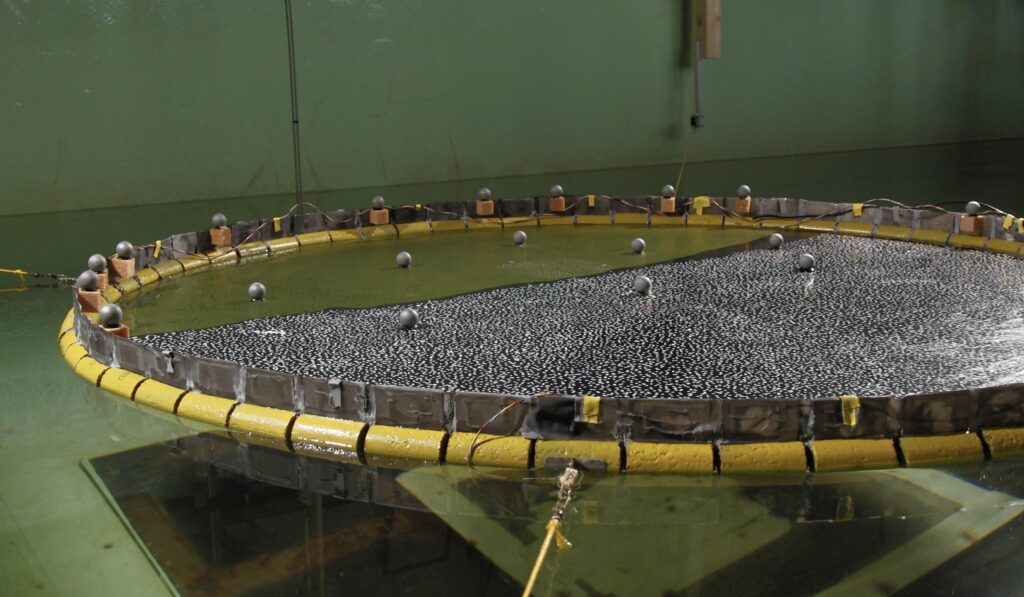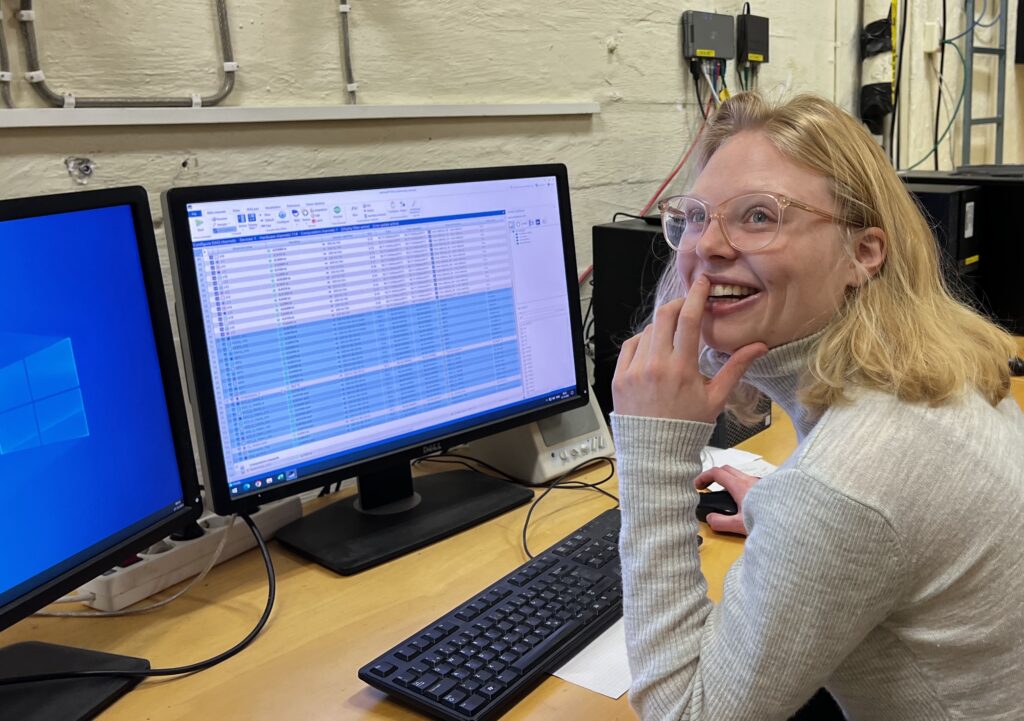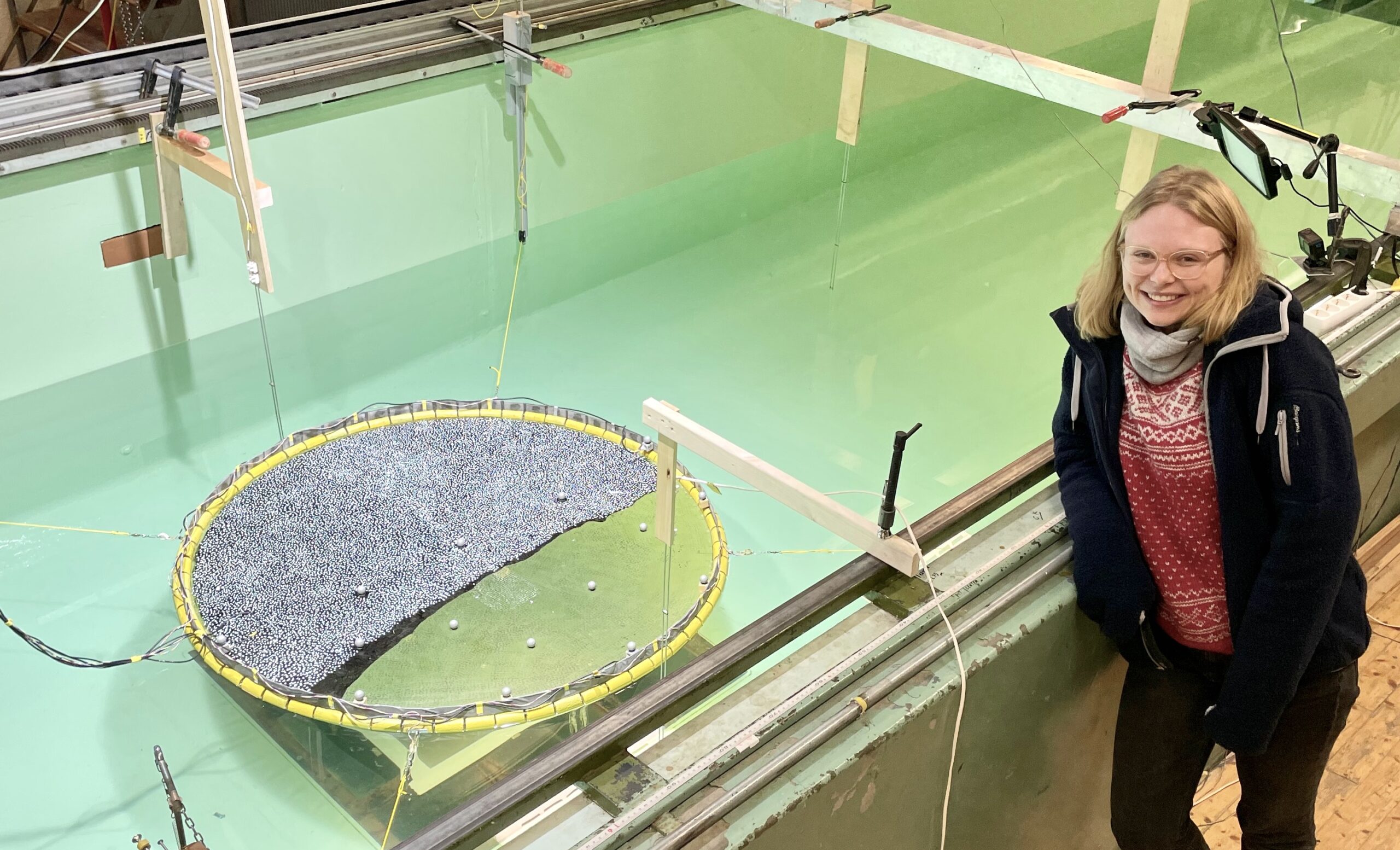To reach the UN’s sustainable development goals new ideas and solutions building on green energy are important. To this, floating solar islands are a promising new concept.
To increase solar energy production, it’s easiest to increase the area the solar cells cover. The ocean covers 70 percent of the earth’s surface. By exploiting this unused area, we can save land area for things like food production.
Even though we can’t place them anywhere in the ocean, there are still significant amounts of land we can save with these floating solar panels.
Clean and affordable energy

Here you see a model of the structure without solar panels. It’s quite simply a floating collar. It’s similar to something like a fish cage but with a flexible membrane on the inside instead of fish.
On top of this membrane the solar cells will be attached. Now we’re trying to figure out how it will behave in waves, so that we can make it stronger and more cost-effective.
We are making theoretical models to explain what happens, with the goal of making a model that can calculate the results of the experiments we do.
I have done experiments with a small model to 1:50 the scale which we subject to waves of different frequencies. Then we measure movements in the model. The dots you see were drawn by hand. It actually took four hours, which proves that such experiments can be a real test of patience! We take pictures of this pattern and use “Digital Image Correlation” to measure movements. We had a whole 15 TB worth of pictures after that period!
When it comes to the UNs sustainable development goal #7, “affordable and clean energy”, we’re working directly to “Ensure access to affordable, reliable, sustainable and modern energy for all”.
Membrane-based structures are superior when it comes to price, and the solar cells will have increased effect because of the cooling effect of the water under the membrane. This can also prevent evaporation of water in warm areas.
PhD at NTNU

It’s very nice to be at PhD in Trondheim. I believe I have the best colleagues in the world. My main supervisor is Trygve Kristiansen. He’s very invested in marine hydrodynamics and is specially interested in my work with floating solar cells.
My colleagues and I often do other things outside of work, such as skiing and climbing.
Additionally, I quite like what I do. On a normal day there’s a lot of programming and data-analysis. It’s exciting to get new results. There are also constant challenges. Solving problems you didn’t think could be solved gives an immense feeling of accomplishment!
I chose to do a PhD instead of work in the industry because I liked writing my master’s so much, I wanted to continue. Being paid to learn something new and immersing myself in the field is a luxury.
I also think what I learn here will be of much use later in work-life.


